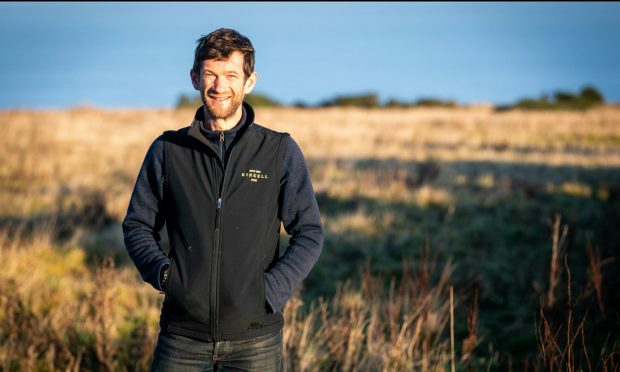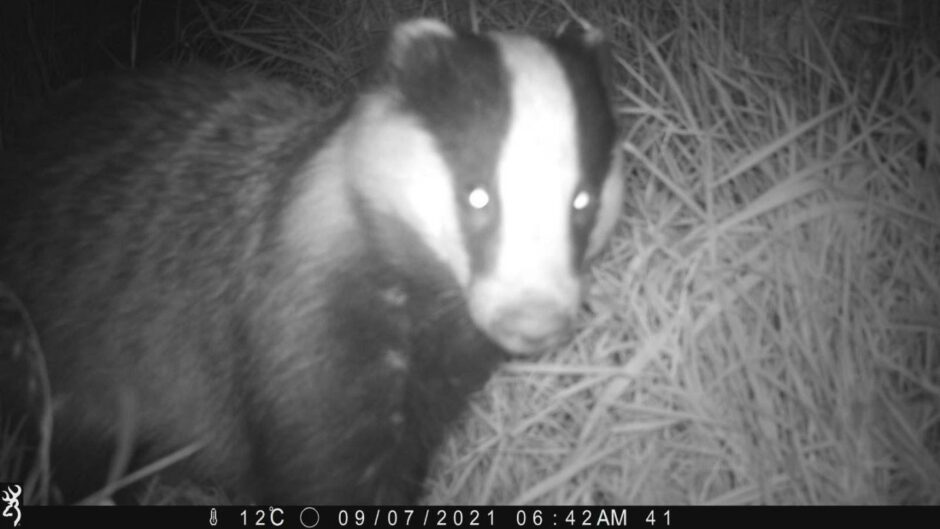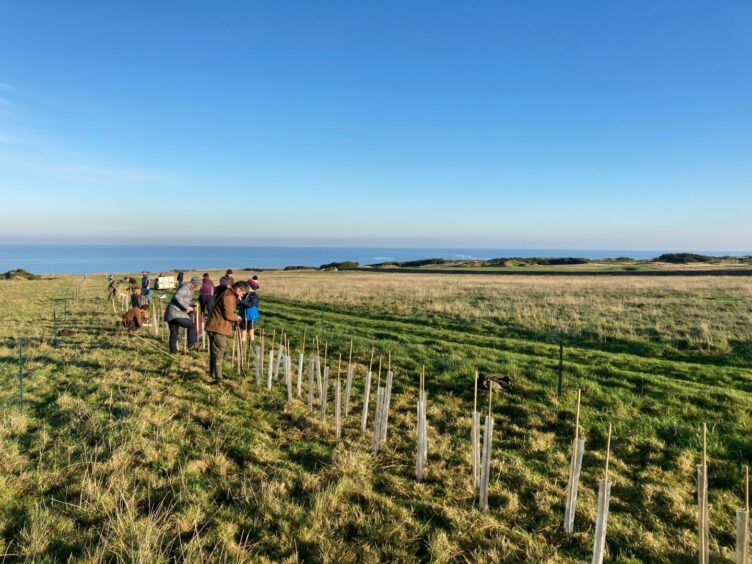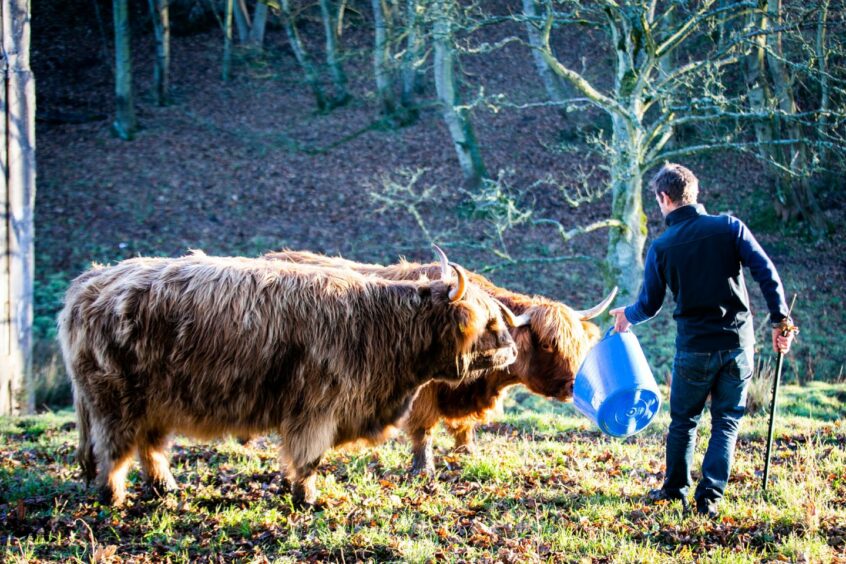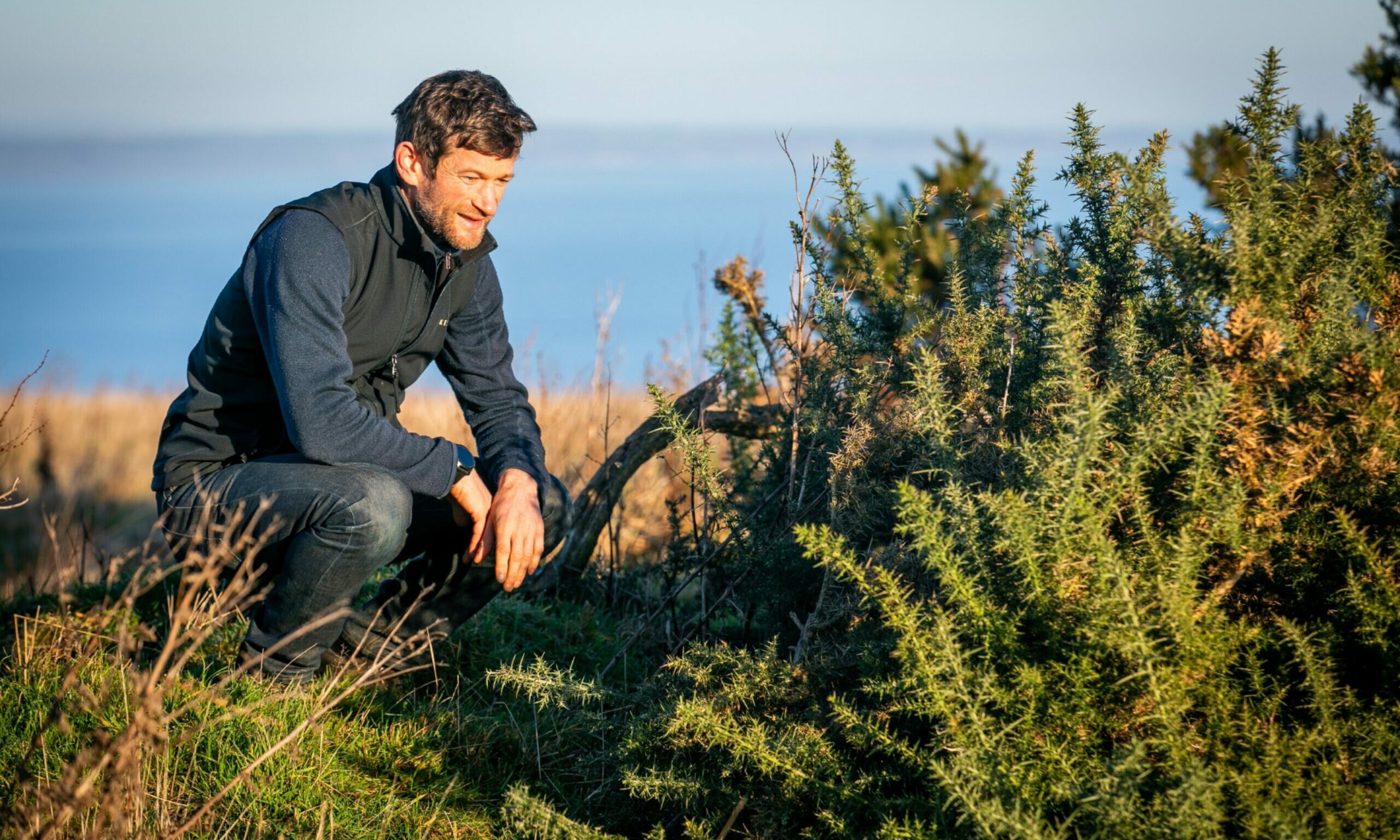Land manager Rory Fyfe turned his back on the life of an economist in Qatar three years ago to help run the family farm and wedding business Kinkell Byre.
The father of three is at the helm of an exciting new stage for the well-known St Andrews wedding venue, where the former calving shed is now filled with guests rather than livestock.
The former bank worker is now the latest proponent of the growing rewilding movement at his home at Kinkell Byre.
He is helping nature to “fight back” at the scenic spot on the cliffs to the south east of the Fife town.
“In the last couple of hundred years we have done a lot of damage to biodiversity,” he says.
“We’ve lost lots of plants and species that used to be around here, but aren’t any more.
“We’re trying to get these species back and enhance our environment. That to me is what rewilding means.”
Why does Fife need rewilding projects?
Fife contains a wide range of different habitats. From the nearby sand dune system next to west sands beach in St Andrews to the heathland of the Lomond Hills.
Experts have found around 10,000 different species of plants and animals in the Kingdom.
But that rich heritage is both degraded and under threat, with many more species lost with every year.
The issue is particularly important at Kinkell. The land at the bottom of the farm falls away into cliffs that make up part of the St Andrews to Craig Hartle site of special scientific interest.
Although the site may nestle close to golf’s Castle Course, it remains home to rare plants.
And Rory and the Kinkell team aim to build upon that heritage.
“Everyone wants the same thing here. We want enriched biodiversity. We want more plant and animal species here.
“Rewilding is a solution to two problems: to the tragic biodiversity loss that’s happened in the last few years and also to climate change.”
Why do some farmers and land managers dislike rewilding?
He is aware the rewilding idea has had a mixed reception from other farmers and land managers.
Rewilding has been linked to everything from less frequent grass cutting in parks, to beaver release, through to the bid to restore wolves to the Highlands.
That’s not always helpful, Rory says.
“We don’t want wolves here or anything like that. We’ve got a wedding business here. We can’t just let things go. It has to be slightly managed rewilding.”
He acknowledges farmers and land managers are businesses, not wildlife charities, and must be properly incentivised for managing their land in way that is as good for nature as it is for the bottom line.
Scottish Government agency NatureScot recently awarded the Kinkell Byre team a small £27,250 grant to fund the rewilding work.
Rory also works closely with Fife Council and the Northwoods Rewilding Network on the project.
So what does £27k get you in the rewilding game?
In a word: trees. And lots of them. Volunteers from the Fife and Kinross Bat Group helped Kinkell staff to plant 700 of them earlier in the year.
A total of 4,000 more are now on their way, all native hardwoods ready for planting. They will also create ponds and hedgerows.
Who inspired the rewilding project at Kinkell Byre?
“The impetus came from me,” Rory adds.
“I grew up here, on this farm. But I only moved back three years ago. We have the wedding venue, but we still have some land left over from the farm.
“But we don’t really use any of that. I just came back here and wondered ‘could we do more with the land?’ Then Covid happened.”
Rory was reading about rewilding while waiting out the pandemic at Kinkell Byre.
“I’ve always spent a lot of time in the Scottish hills. I love them. But it dawned on me that they have become a bit of a wasteland.
“I came to see rewilding as the solution to that.”
He admits his young family might sometimes miss the heat and other attractions of life in the Middle East, but for him there is no looking back.
“It would be great to see more life and richer wildlife here. And that is what we are all working towards.”
